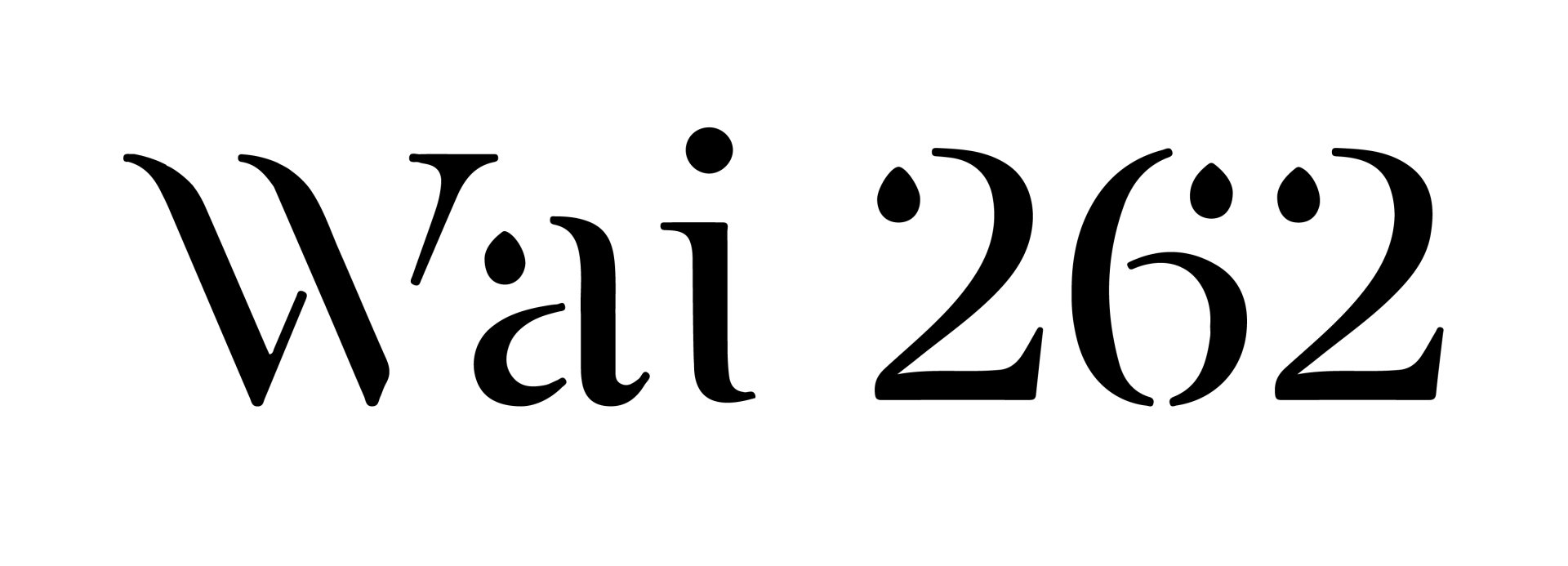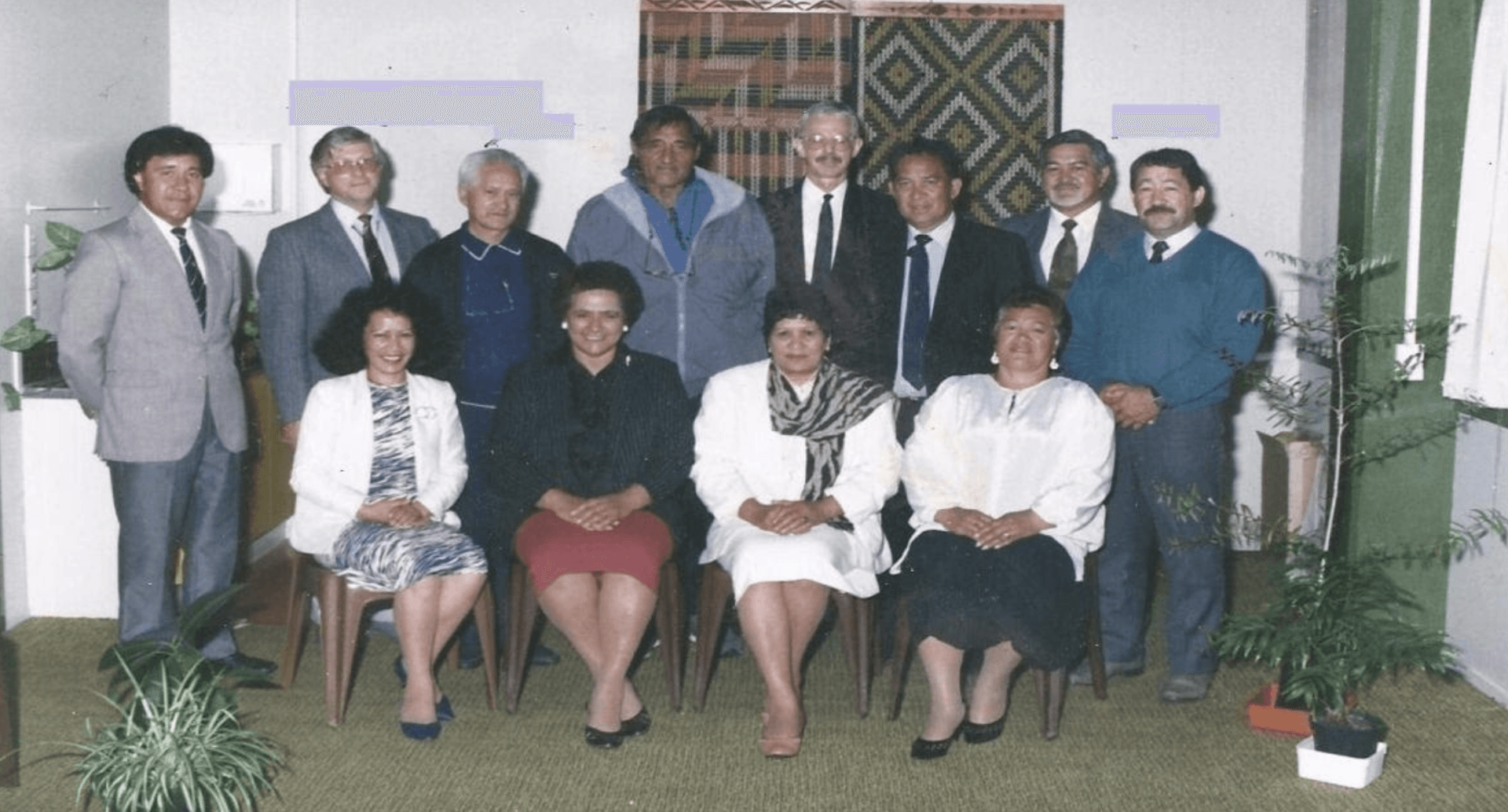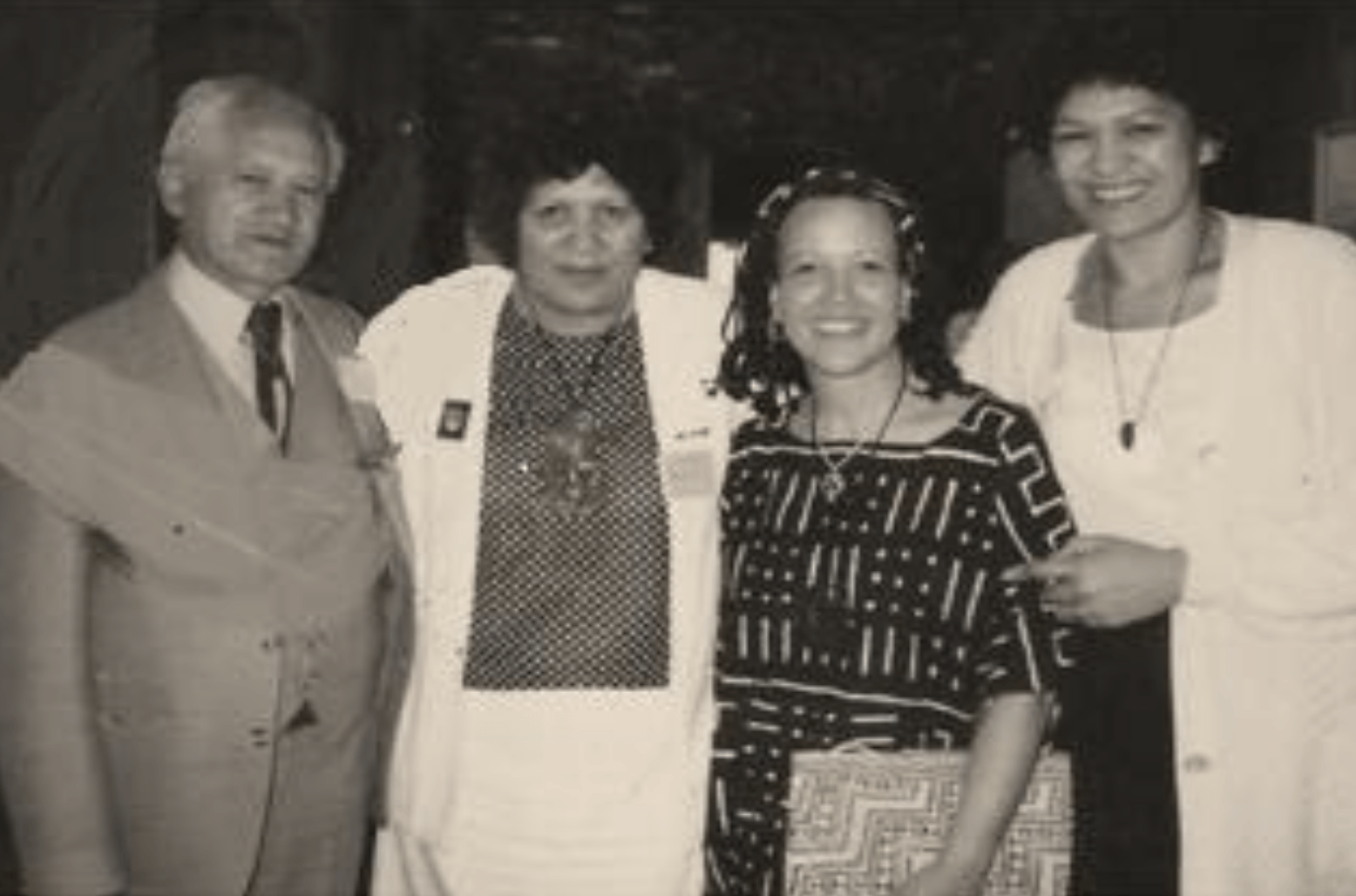1990 to 1999
1990
Dell Wihongi and the Pu Hao Rangi Trust established Te Wao Nui A Tane National Ethnobotanical Garden at Mangere. Dell was successful in gaining government science funding for a research programme to propagate and study the pre-European kūmara she had retrieved from Japan, and she established a mara at Mangere. Tubers of the different varieties grown by Dell were given to those who wanted to help safeguard and grow them. Dell’s supporters at the time in Pu Hao Rangi, a community-based Trust, were Jerry Moana (Chairman), Te Pere Curtis, Solomon Tipene, Arthur Toki, Adelaide Cherrington and Brownie Williams, Hemi Te Rapaia, Kohu Johnston, Mere Biddle, Jack Graham, Henare Huru and Kingi Mita
Photo 9. Pu Hao Rangi Māori Resource and Research Trustees
DSIR ‘Māori Responsiveness Committee’ established, including Dell Wihongi, John Hippolite, Murray Parsons and Oliver Sutherland. The Committee advised the Crown regarding the roll-over of DSIR’s Māori-focused initiatives during the disestablishment of DSIR and the creation of ten new Crown Research Institutes (in July 1992).
Work continued on drafting of WAI 262 claim. Moana Jackson and Dell Wihongi attended Indigenous Intellectual Property Conference in New York, to discuss international implications of claim and broader issues of intellectual property it raised.
Photo 10. New York, USA. Dell Wihongi, Richard Sneider, Nina, Moana Jackson, (Back) Gabrielle, Elsa Stamatopoulo
Dell continued to highlight the issue outside New Zealand, e.g. as keynote speaker at the World Indigenous People’s Peace Conference in Oregon USA, in 1992, accompanied by her daughter Hema Broad (Wihongi) and Te Pere Curtis.
Photo 11, Peace and the Planet, Eugene, Oregon, USA 1992. Te Pere Curtis, Dell Wihongi, Kaylynn Two-Trees, Hema Broad
At the same time, Tama Poata and John Hippolite (who had both been arrested earlier when demonstrating for the return of the Raglan golf course [Whaingaroa]) joined forces with Eva Rickard and, again with the assistance of Moana Jackson, drafted and lodged a claim for the ‘Queen’s Chain’ (WAI 172) in October 1990. The claim asserted that the Crown had no authority to establish the Queen’s Chain, as it had not approached the various iwi, hapū and whānau in their tribal areas. The claim is in abeyance. As with WAI 262, Tama, Eva and John were acting as individuals in a claim which was not iwi-based but which would ultimately benefit all iwi.
1991
October:
Native Flora and Fauna Claim (WAI 262) lodged with the Waitangi Tribunal. Saana and Del, particularly, explained the basis of WAI 262 at hui around the motu but gained very
little support for the kaupapa. At the time national Māori organisations, such as the New Zealand Māori Council and the Māori Congress were largely unsupportive of the claim.
The Original Claim
A CLAIM relating to the Protection, Conservation, Management, Treatment, Propagation, Sale, Dispersal, Utilisation and Restriction on the use of and transmission of the knowledge of New Zealand Indigenous Flora and Fauna and the genetic resource contained therein.
The claimants argue that they have been and are prejudicially affected by the actions and omissions of the Crown and its representatives in denying the tino rangatiratanga o te Iwi Māori, and particularly seventeen points relating to tino rangatiratanga and breaches of the Treaty of Waitangi.
Seven representative plant and animal species are named in the claim, together with all the indigenous forests of Aotearoa. Examples of breaches relating to these species are:
- The DSIR disposing of the known kūmara varieties to Japan and the Crown’s actions and inactions removing the ability of Māori to preserve biodiversity and denying Māori control of the intellectual cultural property rights in flora which are an inherent part of te tino rangatiratanga.
- With Pohutukawa the action of the Crown in vesting proprietary rights in species, or varieties of species, specifically the grant of Plant Variety Rights over the Pohutukawa Var. 195 "Carousel" is contrary to the Treaty of Waitangi and a denial of te tino rangatiratanga o te Iwi Māori as it relates to indigenous flora.
- Permitting the sale, export and commercial exploitation of Hebe species Koromiko by New Zealand and overseas interests is a denial of te tino rangatiratanga.
- Permitting the selling, disposal and export of the species Puwānanga or Clematis spp. and thereby subjecting it to the application of genetic modification (in this case plant cross breeding) is a denial of conservation, proprietorial and development rights.
- Actions by the Crown to adopt conservation measures in relation to indigenous timbers are the denial of te tino rangatiratanga prevents Māori exercising kaitiakitanga in relation to indigenous forests.
- Actions and inactions by the Crown remove the ability of Māori to preserve biodiversity within indigenous flora and thus deny Māori control of intellectual and cultural property rights in flora, which are an inherent part of te tino rangatiratanga.
- The policies of the Crown prevent Māori exercising kaitiakitanga in relation to Pūpū harakeke, the flax snail; the establishment of scientific reserves and protected areas prevent or inhibit Māori access to the species Pūpū harakeke and is a denial of the right to maintain those cultural and spiritual concepts which are an inherent part of te tino rangatiratanga o te Iwi as it applies to indigenous fauna.
- The export of Tuatara for scientific or diplomatic purposes have been carried out without negotiation or input from Māori; the establishment of scientific reserves and protected areas prevent or inhibit Māori access to Tuatara and the passage of the Wildlife Act 1953 and all other legislation for the protection of Tuatara are a denial of te tino rangatiratanga.
- Crown actions that prevent Māori exercising kaitiakitanga over Kererū, the passage of the Wildlife Act 1953, the establishment of scientific reserves and protected areas which prevent Māori access to Kereru, are denials of te tino rangatiratanga.
THE GENERAL CLAIM is that the Crown dismissal of te tino rangatiratanga, as a sovereign political authority exercised by the Iwi, is a breach of the Treaty of Waitangi. Such a dismissal can only be remedied by Crown acknowledgement and recognition of te tino rangatiratanga as reaffirmed in the 1835 Declaration of Independence, and as recognised in the Treaty of Waitangi.
The REMEDIES SOUGHT are:
- The acceptance by the Crown of te tino rangatiratanga as adumbrated [or represented] in Māori law, as reaffirmed in the 1835 Declaration of Independence, and as recognised in the Treaty of Waitangi/ Te Tiriti o Waitangi
- Compensation, the extent and degree of which shall be negotiated between Iwi and the Crown
- Control of indigenous flora and fauna in a manner which recognises te tino rangatiratanga o te Iwi Māori.
1993
The nine tribes of Mataatua convened the First International Conference on the Cultural and Intellectual Property Rights of Indigenous Peoples (12-18 June 1993) in Whakatane, which led to the The Mataatua Declaration on Cultural and Intellectual Property Rights of Indigenous Peoples (1993).
John Hippolite died in Nelson, 17 November 1993.
First Amendment to WAI 262 elaborated on the information about the species of the original claim and added International Law - GATT: Trips Agreement, Intellectual Property Rights Law Reform Bill, a list of other Legislation and International Agreements, International recognition of Indigenous Peoples Rights and associated protocols.
1995
The claim WAI 262 was given urgency.
1997
The first hearing occurred in the Far North on 15 September 1997.
1998
Witi McMath passed away 26 August 1998.
Second Amendment to WAI 262 - Concerning Ngāti Porou.





